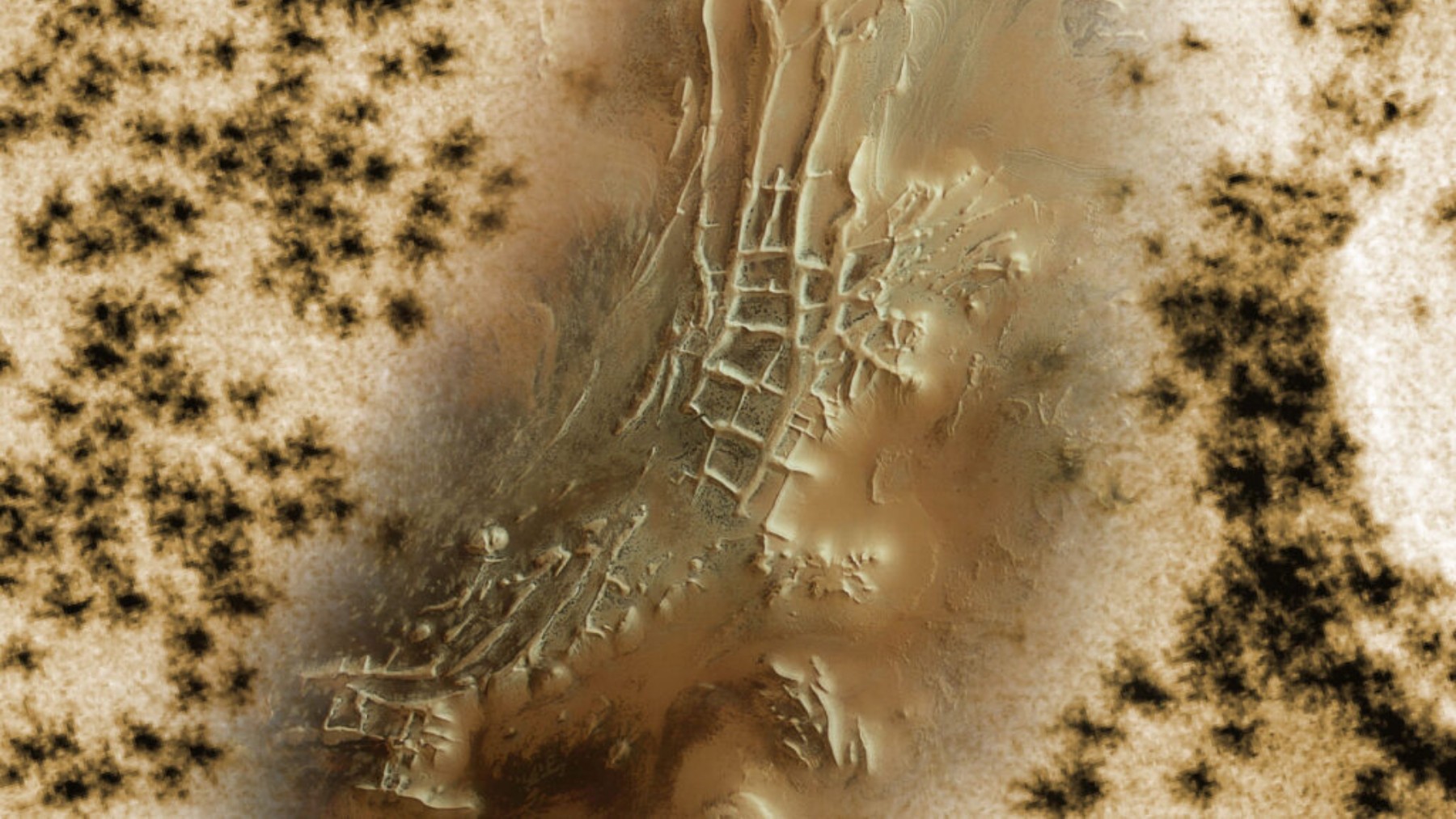Don’t worry if you’re not a fan of spiders; the European Space Agency (ESA) calls them ‘Martian spiders,’ but they are actually eruptions of carbon dioxide gas in a region of the planet Mars, so you can keep reading without worry. These formations were detected thanks to the ESA’s Mars Express orbiter and the ExoMars Trace Gas Orbiter, located in the southern polar region of Mars, which is named Inca City. These formations, which range from 0.03 to 0.6 miles wide, originate during the Martian spring when the carbon dioxide ice layers begin to melt, or in the case of the lower layers, they undergo sublimation.
The gas expands and rises, exploding out of the ice layers, causing geysers of dark dust from the surface, creating that drawing that resembles a spider. The idea that the Inca City (Angustus Labrynthus) was formed by sand dunes was dismissed in 2002, when the Mars Orbiter revealed that it is a circular layout of 53 miles. It is believed to be the result of an impact crater, that is, the result of a collision against the planet.
Inca City, Angustus Labyrinthus
This region is a geological formation on the planet Mars, located near the South Pole, discovered in 1972 by NASA’s Mariner 9 spacecraft. The images received show what at first glance appear to be ancient ruins, with interconnected ridges and valleys. Despite its name, it is not a possible civilization, but rather structures resulting from geological processes such as the impact of an asteroid. It is believed that this impact caused the cracking of the planet’s crust, allowing magma to rise which formed these dikes. Erosion has done its work over time, exposing softer material and hard rock walls, giving it the appearance of a city (but it’s not).
Martian “spiders”
If you’re not a big fan of spiders, don’t worry, this article is free of danger. The reality is that it is about eruptions of carbon dioxide gas on the planet Mars, but they have received this name from the European Space Agency (ESA). These are gas jets measuring between 0.03 and 0.6 miles (45 meters to 1 kilometer) wide. How can they originate?
With the arrival of Martian spring in the southern hemisphere of the planet, the temperature begins to rise, causing the layers of carbon dioxide ice to melt. This causes the lower layers of ice to sublimate, turning into gas. After expanding and rising to the surface, this gas along with surface dust creates dust geysers, which are responsible for these spider-like patterns. We are talking about geysers that manage to break through ice that is 3.3 feet (1 meter) thick, as indicated by the European Space Agency (ESA).
Why is it called Inca City?
As we have mentioned, the images that were first obtained from the Inca City, also known as Angustus Labryrinthus, led scientists to think that the linear ridges that appeared to be ruins could have been petrified sand dunes or Martian glacial remains. It was in 2002 that, thanks to the Mars Orbiter, clear images were obtained revealing that the theories in place were very far from reality. It was actually a circular formation with a width of 53 miles (86 km).
The prevailing idea is that it was the result of an impact on the planet, giving rise to this ancient impact crater. This suggests that these are geometric ridges resulting from the intrusion of magma that emerged through the cracked crust after being struck. According to this theory, the crater has been filled with sediments that have eroded, leading to these highly visible formations that resemble ancient ruins to the human eye.
Was Mars destroyed by nuclear weapons? Find out here!





